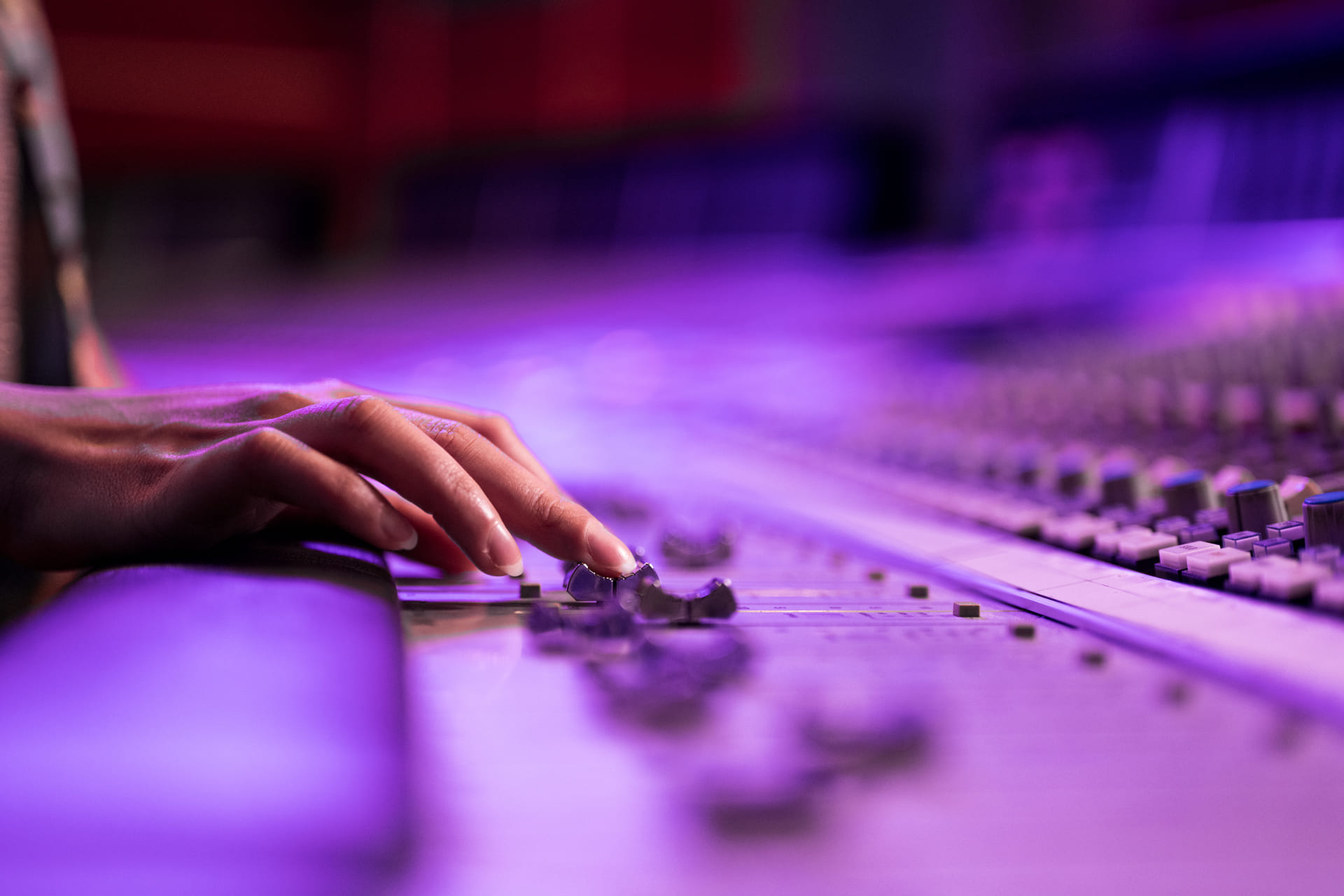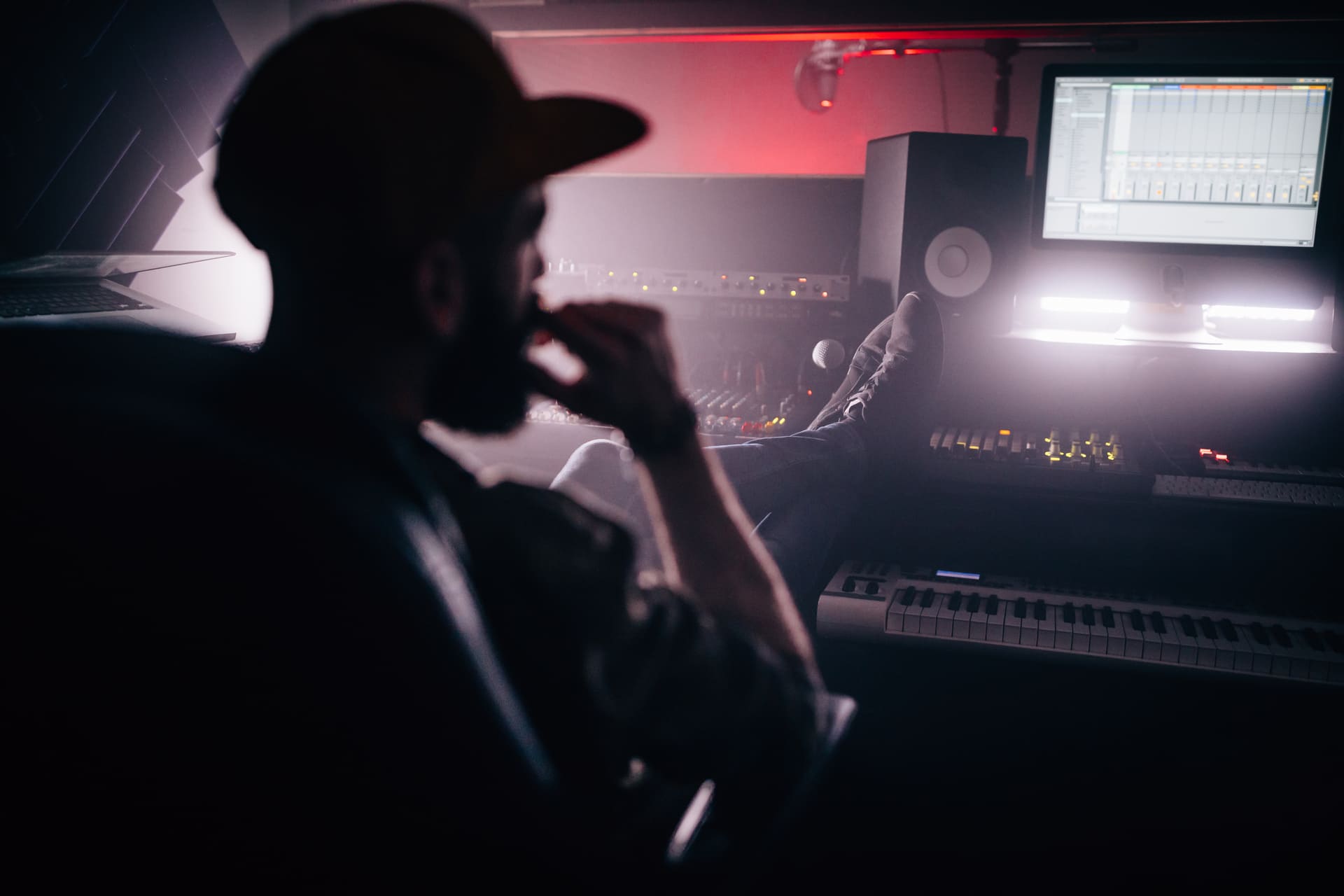Trying to break into the music industry as an independent artist can be personally rewarding yet discouraging at the same time.
You may find your financial safety dwindling as you cover costs like music distribution, payment for studio engineers, music promotion, and much more. It can also be a real struggle to make a name for yourself on streaming platforms like Spotify and Apple Music.
Many artists feel tempted to let go of their dream as they struggle to see the light at the end of the tunnel — attention from heavy-hitting record labels and financial gain that makes it all worth it.
If this sounds like you, maybe it’s time to change your perspective slightly. You can view music as a side hustle rather than a primary source of income. If you’re sourcing money from another “bread and butter” job, this will diminish those painful feelings and keep you progressing in the music industry.
The key is consistency, and today’s article will break down the most cost-efficient ways to nurture your side hustle and gain new music fans.

Table of Contents:
- The Power of the Side Hustle
- The Consistent Side Hustle: How to Make a Name for Yourself as an Artist
- HUDL Music
- The Takeaway
The Power of the Side Hustle
Engaging your creativity, perfecting your music, and earning extra income sounds like a dream to most people. Nothing is stopping you from tapping into your side hustle capabilities —- except maybe procrastination and a desire to stay in your comfort zone.
Of course, there are practical reasons to grow a side hustle. Paying down debts and having an extra layer of income security are some examples of why the financially-savvy side of you wants one. But what about having music as a side hustle while understanding that the music industry could become your primary industry one day?
As long as you maintain another source of income, music can be your side hustle or your “passion job.” The primary income source can help you fund it while it steadily grows into something more substantial.
The Consistent Side Hustle: How to Make a Name for Yourself as an Artist
- Space out social media and digital streaming promotion
- Keep track of revenue
- Keep track of costs
- Take advantage of free resources
Space Out Social Media and Digital Streaming Promotion
Many artists struggle with the marketing and promotion side of the music industry. After all, you’re a creative talent; you shouldn’t have to schmooze.
In the early stages of growing your reputation as an artist, you must rely on yourself for promotion. You should develop a plan that successfully paces social media posts and single releases on services like Spotify, YouTube and Pandora.
Many artists make the mistake of overwhelming their audience with so much content that music fans can’t savor a new song before there’s another one. This is also the case for social media platforms. If you’re posting on Instagram or TikTok multiple times per day, no one will be able to keep up with you, and your audience won’t be able to grow.
The key is to release music on digital streaming platforms every 6-14 weeks. This technique can drive better results, get you more followers, and help you get featured in new music artist playlists like Spotify’s “Release Radar.”
As for social media, music artists with large followings can get away with posting twice per day. Newer artists growing their music with a side hustle should post less, at maybe once per day or three or four times per week.
Keep Track of Revenue

There is no shame in finding cost-effective strategies when you’re just starting to nurture your music side hustle. A side hustle should help you earn extra income, so you’ll want to find a balance between saving on expenditure and reaping the rewards of your hard work.
Digital Streaming Platform Revenue
You should keep track of your revenue on digital streaming services. The average streaming royalty rate isn’t much, at $0.0015 per play. But this small amount can continue to accumulate as you gain more of a following.
Side Hustles Within the Side Hustle

Being a musician often involves helping others with their projects. Make sure you get paid for any extra work you’re doing for other people. Many artists think that just because they’re independent and new to the music industry that they don’t deserve to get paid for their work right away.
Extra skills that go beyond your side hustle may even change the career path you go down if you notice you’re particularly good at one thing.
Are you a skilled recording technician or a songwriter who helps other artists with their ventures? Get paid for that! Established songwriters are paid an average salary of $52,000 a year, so if you start small and charge smaller amounts, it could lead to an even more fruitful side hustle in the future.
Private Lessons
You can give private music lessons if you need extra cash. After all, your hustle encompasses music in more ways than just becoming an independent artist. If you play the piano or guitar or have a fantastic singing voice, you should allow some extra time to cash in on your skills. This is also a great way to build your connections in the music industry.
Paid Shows
The old-fashioned grind of playing live shows is still as relevant as the tech companies and streaming platforms that have taken over the music industry.
The key is to look for music venues that host open mic nights. This will get you noticed, and eventually, you’ll be able to open for another artist or play a show yourself. As most independent artists know, venues and concert promoters are responsible for payment.
Keep Track of Costs
You have to spend money to earn money, right? The old saying is true when working that music side hustle. But one thing to remember is you don’t have to feel ashamed of taking a DIY route when the “right way” seems too expensive.
The key is to maintain consistency in a world of inconsistent costs – taking a cheaper route when you have to and splurging when you can. It’s all about balance.
Studio Costs
One of the most costly aspects of growing a music side hustle is paying for studio time. If you know someone with a recording space who will give you a great deal, you should leverage that. You may also have your own audio engineer skills you can utilize. However, most artists aren’t that lucky and have to pay for studio time. Recording a single or EP can cost you about $70 per hour at the end of the day.
Then there are the mastering and mixing costs, which may set you back between $200 to $400 per song. These hefty costs are another reason to space out your song releases on digital streaming platforms. Depending on your safety net income and how much you earn through other jobs, you may only be able to release a few songs per year – but this is okay; just keep it consistent!
Marketing Costs
Record labels bear the brunt of marketing hot new artists and popular established artists, but a new independent artist will need to budget their marketing. Luckily, these costs aren’t too hefty if you pay attention and make a plan.
A good rule of thumb is to take a percentage of what you spent on studio costs, and maybe music video costs, and set it aside for marketing. Then you can spend a small amount of money on effective strategies like the following:
- Pay-per-click ads: These ads will place your song release and a link to streaming platforms throughout different social media platforms.
- Influencer promotion: You can contact relevant social media influencers and work out a deal so they help you promote your new song release.
- Email marketing: Everyone checks their email, perhaps a little too often. An eye-catching marketing email will create more buzz around your music. You can use a paid website platform like Wix or Squarespace to hone your email marketing skills.
- Social media: Grow your social media skills by researching the best ways to promote your music. It’s much better to start doing this yourself than to spend extra money paying someone to manage it.

Scams
Many artists also fall victim to scams, unfortunately. One example is the “pay-for-play” Spotify scheme that promises to recommend artists in its algorithm in return for a pay cut. So you aren’t paying extra for a service yourself; you’re accepting a decrease in pay in return for recognition that isn’t guaranteed. While it may seem inconsequential, you should not take on this extra cost.
Take Advantage of Free and Low-Cost Resources
Low-cost is good, and free is better. To lower your costs as much as possible, you need to do most of the work yourself and scan the internet for low-cost resources that can help you on your path.
Invest in Yourself
You don’t want to pay many people when you’re just starting as a musician. You might not be able to get around studio and recording costs, but try to limit how many people you have to pay for other things.
Your best free resource is yourself, and this goes without saying, but write your own songs. Paying a songwriter in the beginning stages is almost unheard of in the music industry. Of course, there are exceptions to this, but if you’re trying to branch out as a singer-songwriter, limit the creative minds to just your own whenever possible. You should also try to manage social media yourself, but you know this already.
You can also try shooting a music video yourself if you have the equipment or find a cheap, new videographer just starting their career (like you!).
HUDL Music for Music Marketing
You know to be on the lookout for cost-effective or free studio time and paying as few people as possible, but you should also look into free or low-cost digital resources.
HUDL Music is a free platform that helps independent artists like yourself connect with other musicians from all around the globe. It also provides a centralized toolbox that every indie musician needs to market themselves (don’t worry, it plays nice with all your other social media accounts, Soundcloud account, etc.). For example, the more you build out your artist, podcaster, or record label profile and share with the community, upload singles, etc., the free mobile EPK feature builds itself for you automatically. This prevents you from wasting your precious creative time updating a bunch of boring boxes and links manually like you do with other older tools in the market. This feature alone is worth the price of admission (which, again, is $0).
It also takes away some IRL networking burdens. It gives you a platform to express yourself fully and realize your identity while enabling instant connections to artists, songwriters, and potential collaborators worldwide. In a nutshell, it’s kind of like if LinkedIn made a website strictly for music artists.
HUDL Music also comes with affordable paid add-on features, like the Unlimited Music Distribution for just $10 a month, which includes an exciting, unlimited TipJar feature for music fans to grow gratitude for indie artists. It goes hand-in-hand with streaming services like Spotify, rather than competing with them.

The Takeaway
If you’re a talented musician, establishing a side hustle is the way to go.
Passion jobs on the side give you a sense of fulfillment and growth, which most artists crave. A side hustle does this in a way where you can slowly dip your feet in the water rather than jumping into the deep end and drowning in an unfamiliar world — with no financial safety nets and backup plans.
The trick is to keep things consistent as you explore costs and revenue and learn how to effectively promote yourself.

